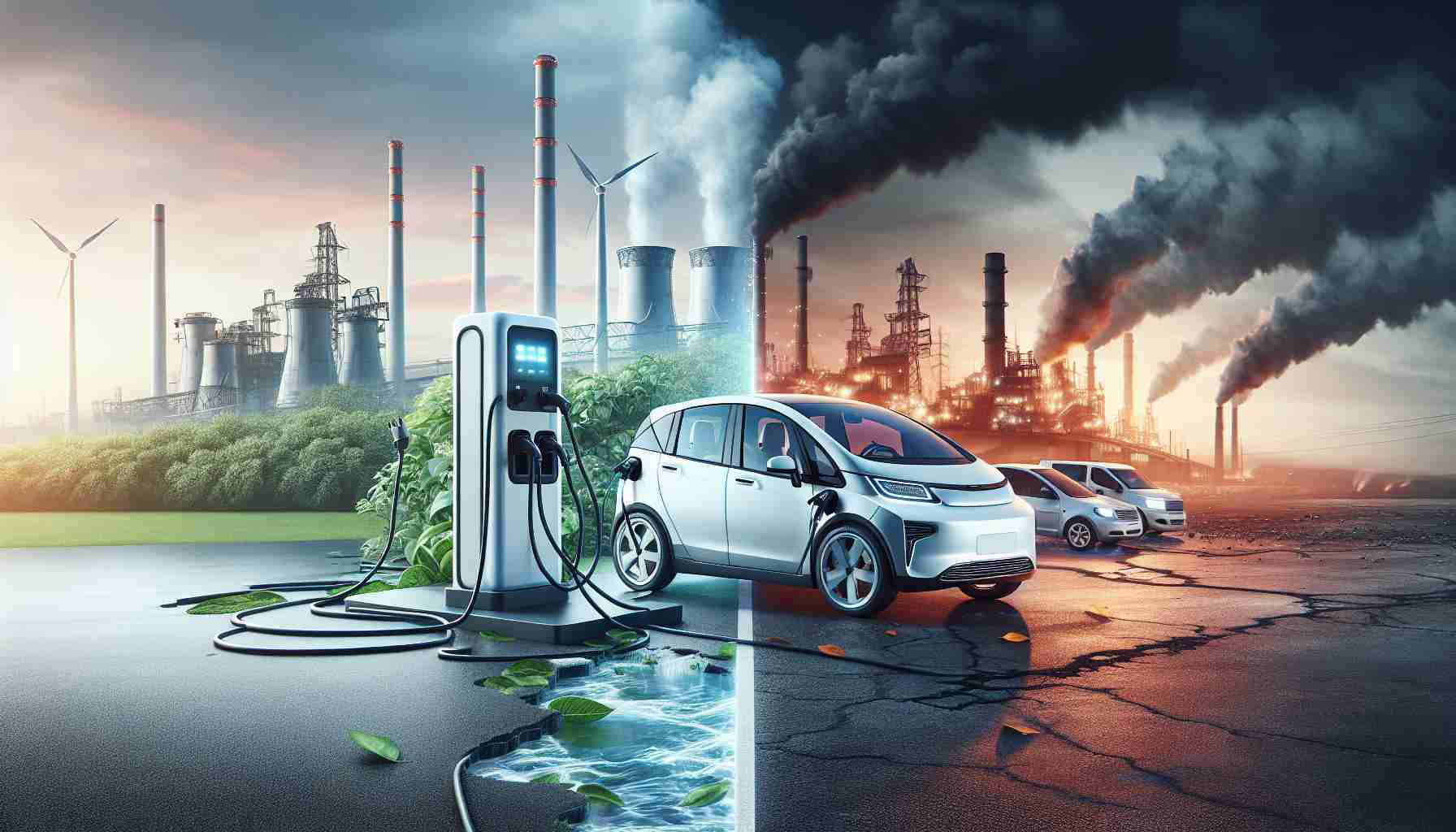The Dangerous Side of Electric Vehicles in California Fires
In a recent CNN report discussing the California wildfires, Governor Gavin Newsom highlighted a concerning issue: the management of lithium-ion batteries. These batteries, often found in electric vehicles (EVs), pose a significant risk during fire incidents. When exposed to extreme heat, they can ignite and burn for hours, releasing hazardous substances into the air before they can be controlled.
With the increasing push for electric vehicles, particularly by politicians in states like New Jersey, it’s important to consider the potential environmental consequences of these batteries. Questions arise about whether policy-makers fully understand the implications of transitioning to EVs, especially as the state moves toward a ban on new gasoline-powered vehicle sales by 2035.
Recent news also indicated that former President Donald Trump plans to impose a pause on offshore wind energy projects, a move that some argue is necessary for careful evaluation. Similarly, it raises a broader question: should there be a reevaluation of the aggressive timelines pushing consumers to embrace electric vehicles, potentially overshadowing environmental hazards?
As climate-related challenges intensify, the conversation about clean energy must also include a thoughtful examination of all technologies involved. Balancing innovation with environmental safety could be crucial for sustainable progress in the future.
The Broader Implications of Electric Vehicles Amid California’s Fire Crisis
The ongoing dialogue around electric vehicles (EVs) is not simply a matter of technological advancement but a reflection of deeper societal transformations. The concerns raised by California’s wildfires and the dangers posed by lithium-ion batteries underscore a critical intersection between innovation and safety. The transition to electric vehicles, while pivotal in the fight against climate change, necessitates a comprehensive discourse that evaluates its broader implications for society and the global economy.
As demand for EVs escalates, driven by both consumer interest and political fervor, there is an urgent need to assess the economic ramifications. The push for widespread adoption could invigorate the tech and manufacturing sectors, presenting an opportunity for job creation and economic rejuvenation. However, countries that lead in battery production, like China, may disproportionately benefit unless Western nations accelerate their manufacturing capabilities.
Environmental sustainability must also be a cornerstone of this transition. The extraction of lithium and cobalt for battery production has raised significant ecological concerns, including water scarcity and habitat destruction. The long-term effects of increased EV use on urban infrastructure, particularly regarding recycling and waste management of defunct batteries, must be prioritized.
The cultural perceptions of EVs are changing as well, with more consumers viewing these vehicles as imperative to a green lifestyle. Yet, this shift must not gloss over the potential hazards associated with battery technology, particularly in the event of disasters like wildfires. Ensuring that innovation does not come at the expense of environmental and public safety will be crucial as we edge closer to a more electrified future, emphasizing that thoughtful policymaking and community awareness will shape this transformative phase in our society.
The Hidden Risks of Electric Vehicles Amid California’s Wildfire Crisis
The Dangerous Side of Electric Vehicles in California Fires
Recent developments surrounding California’s wildfire challenges have brought to light significant concerns regarding the safety of electric vehicles (EVs), particularly those equipped with lithium-ion batteries. Governor Gavin Newsom’s comments during a CNN report underscore the potential hazards associated with these batteries, especially under extreme conditions such as wildfires. When subjected to intense heat, these batteries can catch fire, leading to prolonged and hazardous burns that emit toxic substances into the environment until they are stabilized.
Understanding Lithium-Ion Battery Risks
# Pros and Cons
Pros:
– Lower Emissions: EVs significantly reduce greenhouse gas emissions compared to traditional gas-powered vehicles during operation.
– Renewable Energy Integration: They can be charged using renewable energy sources, helping to increase usage of clean energy.
Cons:
– Fire Risks: Lithium-ion batteries can pose fire hazards during wildfires due to their chemical nature.
– Toxic Emissions: Fires from these batteries can release harmful chemicals, which further exacerbate air quality issues during natural disasters.
Market Analysis and Trends
The push for electric vehicle adoption is driven by several factors, including government mandates and growing consumer demand for sustainable options. Analysts predict the global EV market will continue to expand, with significant contributions from states facing strict emissions regulations, like California and New Jersey. However, the repercussions of rapidly transitioning to electric vehicles necessitate a balanced approach, particularly regarding the understanding of long-term environmental impacts.
Sustainability and Innovations
Companies are actively investing in innovations aimed at improving battery safety and sustainability. Initiatives to enhance the chemical composition of lithium-ion batteries are underway, seeking to decrease their propensity for ignition. Furthermore, advancements in battery recycling and second-life applications can mitigate some of the environmental concerns by reducing the need for new materials.
Frequently Asked Questions (FAQs)
1. What are the main hazards associated with lithium-ion batteries during wildfires?
– Lithium-ion batteries can ignite and burn for extended periods, releasing toxic gases and contributing to environmental degradation.
2. How are manufacturers addressing these safety concerns?
– Many manufacturers are investing in research and development to create safer battery chemistries and improve overall battery management systems.
3. What is the future outlook for electric vehicle safety?
– As technology progresses, it is expected that the safety and sustainability of electric vehicles will improve, balancing environmental benefits with risk management.
Limitations and Considerations
While electric vehicles present a promising solution to reduce carbon footprints, it’s crucial to acknowledge their limitations. Policies mandating rapid adoption must consider not only infrastructure for EV charging and maintenance but also the environmental impacts associated with battery production and disposal.
In conclusion, as the conversation around clean energy continues to evolve, it is essential for consumers, policymakers, and manufacturers to engage in a holistic dialogue about electric vehicles. Understanding the complexities of lithium-ion batteries in the context of wildfire risks will be fundamental in shaping future legislation and technological advancements toward sustainability.
For more insights on sustainable energy solutions and electric vehicle developments, visit Energy.gov.













